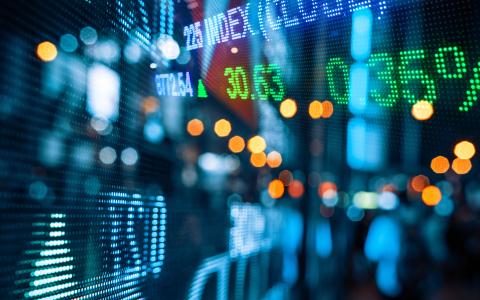
From Marketwatch-- As the Dow Jones Industrial Average shed nearly 1,400 points in just two days last week, Desirae Odjick was calm and collected about the $50,000 she’s stockpiled in her retirement accounts — and the feeling hit her like a lightning bolt.
“That reaction was finally a wake-up call. I was like, ‘OK, I’m cool with risk,’” she told MarketWatch. Odjick, a content marketer in Ottawa, logged into her robo adviser, Wealthsimple, and adjusted her account. She didn’t buy or sell anything; she set her account’s risk level up a few notches.
For Odjick and many other investors, the recent market volatility has provided a powerful lesson on the true meaning of risk tolerance. It’s a concept that younger or less-experienced investors have only felt in the abstract as they built their portfolios during a bull market.
“Most investors, particularly young investors, find out a lot about their true risk profile when markets fall,” said Mike Giefer, a financial planner at The Johnston Group in Minneapolis. “When markets are going up like they have the past couple of years, everyone loves risk because they’re rewarded with investment gains in their portfolios. People often forget that markets don’t just go up and taking risk has consequences, including loss of account value amidst market volatility.”
Here are some key things to know about risk tolerance:
Questionnaires only go so far
When investors set up their portfolios, they usually fill out risk-tolerance questionnaires that aim to measure how they would handle a major loss, both emotionally and financially. Questions include, “If a stock lost 30% of its value, would you buy more, sell it all, or hold onto it?” The questionnaires also ask about how long you plan to work and your financial goals.
Portfolios with higher risk levels are generally weighted more toward stocks than bonds and may hold higher-risk investments in emerging sectors like cannabis and/or emerging economies.
The trouble is, people sometimes answer the more hypothetical questions on risk-tolerance questionnaires inaccurately, either because they’re poor judges of themselves, or because they’ve never experienced a big loss firsthand.
“Risk tolerance questionnaires are like flight simulators,” said Randy Bruns, founder of financial planning firm Model Wealth in Downers Grove, Ill. “A pilot might be able to simulate how they would respond in a crash, but in real life, it will be a lot different.”
When Odjick, 29, first started investing three years ago she jumped in with both feet and set the risk level on her Wealthsimple accounts at 10 out of 10. But a customer service representative suggested that 7 out of 10 may be a more reasonable level, given her novice status.
“They told me, ‘You don’t have the proof points of how you react when the market goes loopy,’” Odjick said. The proof point came this past week.
While headlines blared about the Dow’s third-largest one-day point drop in history, Odjick didn’t bat an eye. “It was just fearmongering,” she said. “It reminded me that following market news is not a solid investment strategy, but it also reminded me that my portfolio did need updating based on my risk tolerance.”
There’s a difference between risk appetite and risk capacity
There are two elements to risk tolerance: how much you’re willing to risk, and how much risk you can actually handle financially. Someone can have a strong stomach for market swings, but if they’re retired and need to tap their investments soon, they simply don’t have the capacity for much risk.
Bruns, for example, is 39 and doesn’t need to live off his investments in the near future. But he’s built his risk capacity by maintaining an emergency fund with enough money to cover six months of expenses and taking out long-term disability insurance that could fill financial gaps if he suddenly comes down with a serious illness.
A person’s appetite for risk is partly ingrained in their personality, but it can also shift because of external factors, says Monica Dwyer, vice president of Harvest Financial Advisors in West Chester, Ohio.
“At times I have found that there were clients that were going through some personal upheaval in their lives that was translating into market jitters,” Dwyer told MarketWatch. One client told her he was having trouble making market decisions after a cancer diagnosis, for example.
You should have some opinion on market volatility
If you were mystified by what the market’s roller coaster ride meant for you, that could mean that you’re out of touch with your own investment goals. Bruns sits down with clients and writes out an investment plan that includes a target rate of return, so his clients know exactly what they’re shooting for.
“Any time market volatility kicks in, if you don’t have a clue what return you even need to accomplish what you’re saving for, and you can’t make sense of why you’re investing the way you are, you’re just doing it all wrong,” Bruns said.
There’s no reward without some risk
Of course, risk is an undeniable part of investing. Investors are in a bit of a Catch-22. The rewards that they earn from markets only exist because of the volatility that can scare some of them away, Bruns noted. “I hate to break it to everyone, but this is all quite normal and to be expected while earning the market’s long term rewards,” he said. “The sooner an investor realizes this, the sooner she stops transferring wealth to those more patient than her.”
In other words, as Vanguard Group founder Jack Bogle famously said, “Don’t do something, stand there.”



